Wax can burn, yes, but what if I told you that with the right candle, it melts into warm, nourishing oil rather than a painful mess? That’s the magic behind candle massage—a treat for your skin and your mood, if you know the rules. Here’s where a first-timer can get tripped up: picking the wrong candle, getting the temperature off, or making the whole thing awkward. Stick around, because I’m laying out the essential dos and don’ts everyone skips. Your next massage could be steamy, smooth—and totally safe.
Direct Answer – The Dos and Don'ts of Candle Massage for Beginners
If you’ve never tried a candle massage, here’s the quick lowdown: use only massage candles designed for skin, always test the wax temperature before application, start small and slow, and avoid sensitive areas your first time. Don’t ever use regular candles, steer clear of hot wax on broken skin, and avoid rushing. For safety and comfort, follow these rules and you’re golden.
Key Points – Quick Takeaways for Candle Massage Newbies
- Pick a candle made for massages (soy or coconut wax, not paraffin!)
- Let wax cool for 15-20 seconds before applying to skin
- Patch test a small area before committing
- Never use scents or additives you’re allergic to
- Keep towels and water on hand for cleanup
- Never leave a lit candle unattended
- Don’t use on broken, sensitive, or irritated skin
- Check in with your partner or yourself about comfort and heat
- Stick to broad muscle areas at first—avoid genitals, face, or open wounds
- Go slow: a little goes a long way with warm wax
Comprehensive Guide to Candle Massage for Beginners
Ever had a regular massage and thought, “This is nice, but it could be a bit more special?” Candle massage takes that chill vibe and dials it up—the combination of glowy light, gentle heat, and botanical scents makes for a full-on spa fantasy. But it’s not just showy: the wax from a real massage candle melts at a lower temperature than ordinary candles, so it’s warm but doesn’t burn. Most of these candles are made from natural stuff like soy, shea butter, or coconut oil, and they go from solid to liquid with a silky, creamy texture. Imagine a cross between the world’s best body oil and the softest lotion you’ve tried.
Right away, it’s easy to fall into traps if you don’t know what you’re doing. Lots of beginners think, “Wax is wax, right?” Wrong. Regular paraffin candles burn much hotter—you’re asking for red skin or worse. Plus, classic candles usually have perfumes or dyes that, when melted, can cause rashes or allergic reactions. Here’s what you want: massage-specific candles, usually labeled as such in stores or online. Skinsweet and Hempoil are two UK brands beginners love, partly for their gentle scents and barely-there heat.
The key moment is pouring. First-timers get nervous—will it be too hot? Here’s the move: once you blow out the candle, wait 15-30 seconds, swirl the wax, and dab a test spot (inside your wrist works great). Warm but not stinging? Good sign. If it’s uncomfortable, wait another 10 seconds and try again. Some people skip patch tests—trust me, don’t.
Now, let’s set things up. Whether you’re going solo or sharing with a partner, have towels ready. Hot wax is messy fun, but it drips, and the last thing you want is struggling to peel sticky wax off your sheets later. Light the candle, give it 15-20 minutes to form a decent pool of melted wax, and dim the lights. Pour slowly from a height of 10-15cm—not right on the skin but close enough to aim. Focus on shoulders, back, calves, or forearms for your first go. Sensitive areas? Leave them for next time. Massage in small circles, using your whole palm to smooth in the oil. If things cool off, relight the candle and repeat as needed.
Don’t forget to check in—are you or your partner enjoying the temperature? Is the scent still pleasant? It’s easy to get distracted, so every few minutes, pause and ask. Play some music and let conversation flow. Candle massage isn’t just about skin—it’s about mood, too.
Here’s a fun stat: in a 2022 survey done by Massage Magazine, 68% of first-timers who tried candle massage reported better relaxation than classic oil massage. That’s likely thanks to the multi-sensory combo of light and heat. Also, some companies—like Melt My Heart or Sensuals—offer candles with extra skin-loving goodies (think vitamin E, almond oil), turning your massage into a full-on skincare routine.
Is it safe long-term? As long as you use the right candles, don’t overdo the heat, and clean up well after, there’s virtually no risk. Take your time, and enjoy the glow—literally and figuratively.
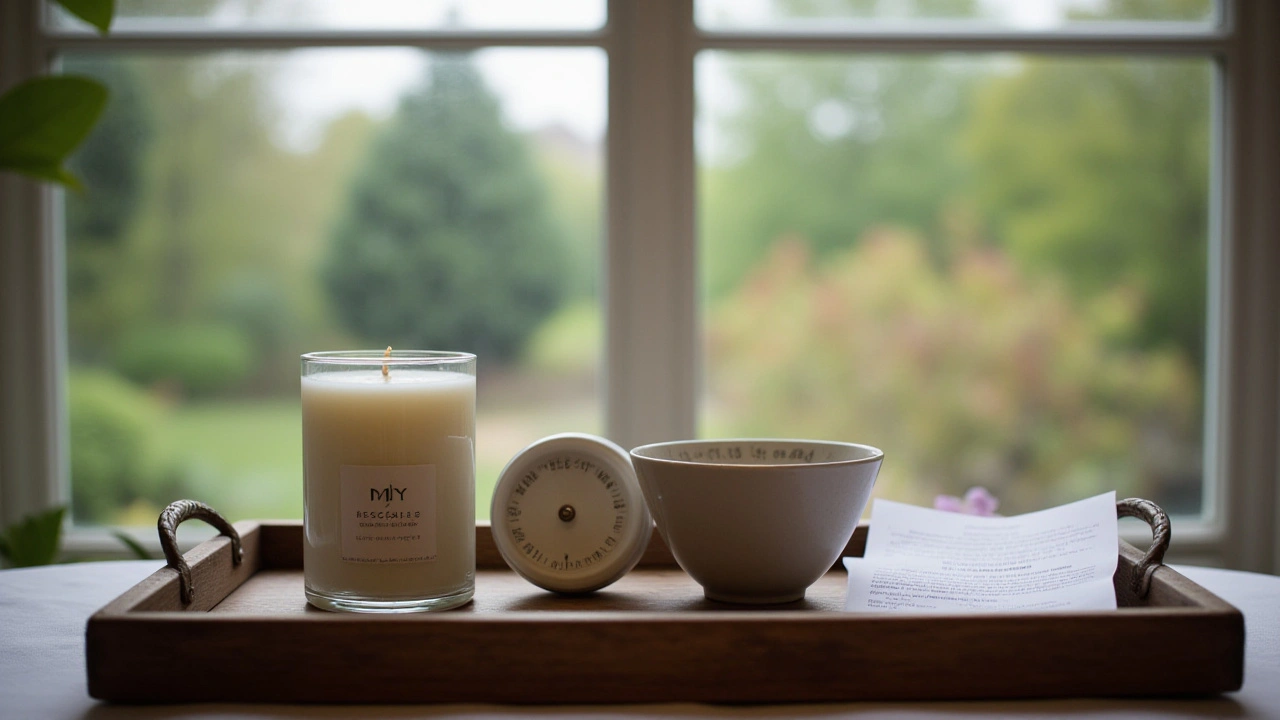
Definition and Context – What Is Candle Massage and Why Try It?
Candle massage isn’t nearly as niche or extreme as it sounds. Look at any high-end spa’s menu and you’ll likely spot it—usually with upgraded words like “luxury” or “aromatic.” It’s simply a massage using specially formulated, skin-safe candles that melt at a safe, low temperature. These candles turn into liquid oil, which is then poured directly onto skin for a massage experience you can’t get from regular oils. Since the wax is nutrient-rich, it absorbs quickly, leaving skin soft without feeling greasy.
The first candle massage candles appeared in France in the late ’90s as part of the spa industry’s wellness wave. Fast-forward, and you’ll find trendy salons in places like Soho, Notting Hill, and even at-home therapists across London offering them. The coolest part? It’s rooted in aromatherapy traditions—meaning scents like lavender or eucalyptus don’t just smell good, they trigger relaxation patches in the brain. Dr. Joan Moore, a renowned aromatherapist, says:
"The warmth relaxes muscle tension while the scent stimulates mood, achieving a deeper sense of well-being than touch alone."
There’s also a psychological side. Candlelight changes the mood: softer, romantic, calming. If you’re new to touch or shy about classic massages, the candle’s glow makes the whole thing more inviting—less clinical, more spa-night-at-home. Couples love it for the same reason: the vibe is unbeatable for intimacy.
But who shouldn’t try candle massage? Anyone with current sunburns, eczema flares, or sensitivity to essential oils might want to skip or talk with their doctor first. And for every Instagram influencer waxing poetic about their candle spa night, there are folks who learned the hard way by using the wrong candle and ending up with upset skin. If you have any doubts—try the patch test and check ingredients lists for allergens.
Don’t make the rookie mistake of buying the cheapest candle you see. Go for reputable names, ideally with lots of reviews and a clear ingredient list. Keep an eye out for terms like “dermatologically tested” or “skin-safe fragrance”—those are your green lights.
Candle massage can sound intimidating, but at its heart, it’s just another creative way to show your body (or your partner’s) some love.
Benefits of Candle Massage: Why Give It a Go?
What’s in it for you beyond a fun story to tell your friends? For starters, the actual oil from massage candles contains skin-nourishing ingredients: shea butter is famous for deep hydration, while coconut oil is loaded with vitamin E. Most formulas ditch parabens and mineral oils, which can clog pores. Instead, imagine your post-rub skin feels like a warm silk sheet—no joke. It’s especially good news if you struggle with winter dryness or just want a healthy glow.
Mood boost is another big one. Scented candles have a real effect on the brain—a whiff of lavender, citrus, or vanilla can act as a mini reset for stress. Combine that with touch (and maybe some music), and you’ve got a potent antidote to a bad day. If you massage with someone else, you also get the bonding benefits: studies tracking couples’ relaxation nights saw a 30% improvement in emotional closeness after candle massages versus regular massages. Probably not surprising, given the candlelight and scents at play.
Those who worry about mess—don’t. Massage candles are designed to be easy to clean; most oils wipe away with a damp towel. And if you’re into sustainability, you’ll dig that most modern brands use soy or coconut wax, both of which are biodegradable and less likely to irritate allergies compared to paraffin.
Here’s a spotlight on some statistical benefits:
| Benefit | Reported After Candle Massage | Increase vs. Traditional Massage |
|---|---|---|
| Muscle Relaxation | 84% | +12% |
| Skin Hydration | 76% | +21% |
| Mood Improvement | 89% | +27% |
For anyone with tight shoulders or back tension, the extra warmth from the candle boosts circulation—it’s like a heating pad with benefits. According to one UK physiotherapy newsletter, clients reported feeling relaxed for twice as long after candle massage compared to when standard oils were used. And if you get bored easily by the same old spa routine, this is a surefire way to switch it up.
People with sensitive skin still need to peek at ingredient lists, but most reputable candle brands test for common allergens. Double check before you buy, especially if you tend to break out or react to scents.
Another perk? Candle massage is an easy way to bring the luxury of the spa to your own bedroom or bath. No need for fancy certifications or treatments—it’s very DIY-friendly once you have the right products. That’s why more people are swapping date night dinners for candle massage at home. Relaxation has never looked (or smelled) so inviting.
Dos and Don'ts: The Candle Massage Rules You Have to Know
Here’s where you separate the spa pros from the soot-covered rookies. Follow these dos and don’ts to make sure your candle massage experience is safe, fun, and totally worth repeating.
- Do: Use a massage-specific candle. These are made from soy, shea, or coconut oils, which melt at 40-50°C—way below the burning point of regular paraffin candles.
- Do: Read the label before you buy, checking for allergens and non-toxic dyes or fragrances.
- Do: Light the candle 20 minutes before you want to start to ensure you have enough melted oil.
- Do: Always test the wax’s temperature on your wrist before pouring anywhere else.
- Do: Have backup towels on hand for drips or spills. Hot wax is fun, but not in your hair or on prized sheets.
- Do: Start on a small, less sensitive body area until you get used to it.
- Do: Keep your session open and communicative: check if the temperature, scent, and pressure are feeling right.
- Do: Extinguish the flame before pouring—and never pour directly from a high flame!
- Do: Choose unscented or lightly scented candles if you get headaches from strong aromas.
- Do: Clean skin after the massage with a soft washcloth if there’s residue, especially before hitting white sheets or clothes.
Now the don’ts:
- Don’t: Use regular household, scented, or decorative candles—they burn hotter and can hurt skin.
- Don’t: Rush into pouring large amounts—start with a teaspoon and add as you go.
- Don’t: Apply to open wounds, sunburns, or skin with contact dermatitis.
- Don’t: Leave a lit candle unattended, especially around pets or kids.
- Don’t: Use on your face, genitals, or near eyes—those spots are way too sensitive for temperature experiments.
- Don’t: Overheat the candle—most have a max burn time; stick to 30-60 minutes for safety.
- Don’t: Forget to trim the wick if it gets too long—a high flame can soot up the wax and ruin the massage.
- Don’t: Ignore discomfort—if the heat or scent feels “off,” stop right away.
Here’s a side-by-side look at how candle massage compares to classic oil massage:
| Feature | Candle Massage | Oil Massage |
|---|---|---|
| Temperature | Warm, soothing | Room temp (unless preheated) |
| Added Benefits | Skin hydration, aromatherapy | Hydration (varies by oil) |
| Mood Setting | Ambient candlelight | Artificial light |
| Risk | Minor burns if mishandled | Low risk |
| Mess Factor | Medium (oil can drip) | Low-medium |
If you want the safest, most luxurious experience, follow each do and don’t above—your skin (and your sheets) will thank you.

FAQ: Your Candle Massage Questions Answered
- What kind of candle should I use? Only massage candles with natural soy or coconut wax, and added skin-safe oils.
- Is candle massage painful? Not if you follow the rules! The wax is designed to be warm but not burning. Always test first.
- Can I use a regular scented candle from home? No—paraffin and other waxes burn at a much higher temperature and may contain chemicals that are rough on skin.
- Is it messy? It can be if you’re careless, but towels and a shower after make it easy to manage.
- Is it safe for sensitive skin? If you patch test and check ingredients, most people with sensitive skin tolerate proper massage candle oils well.
- Can I make my own massage candle? Some folks do! Just make sure you use cosmetic-grade waxes and oils, and test temperatures carefully.
Ready for that candlelit relaxation? Trust the checklist, take your time, and let the glow do the rest.
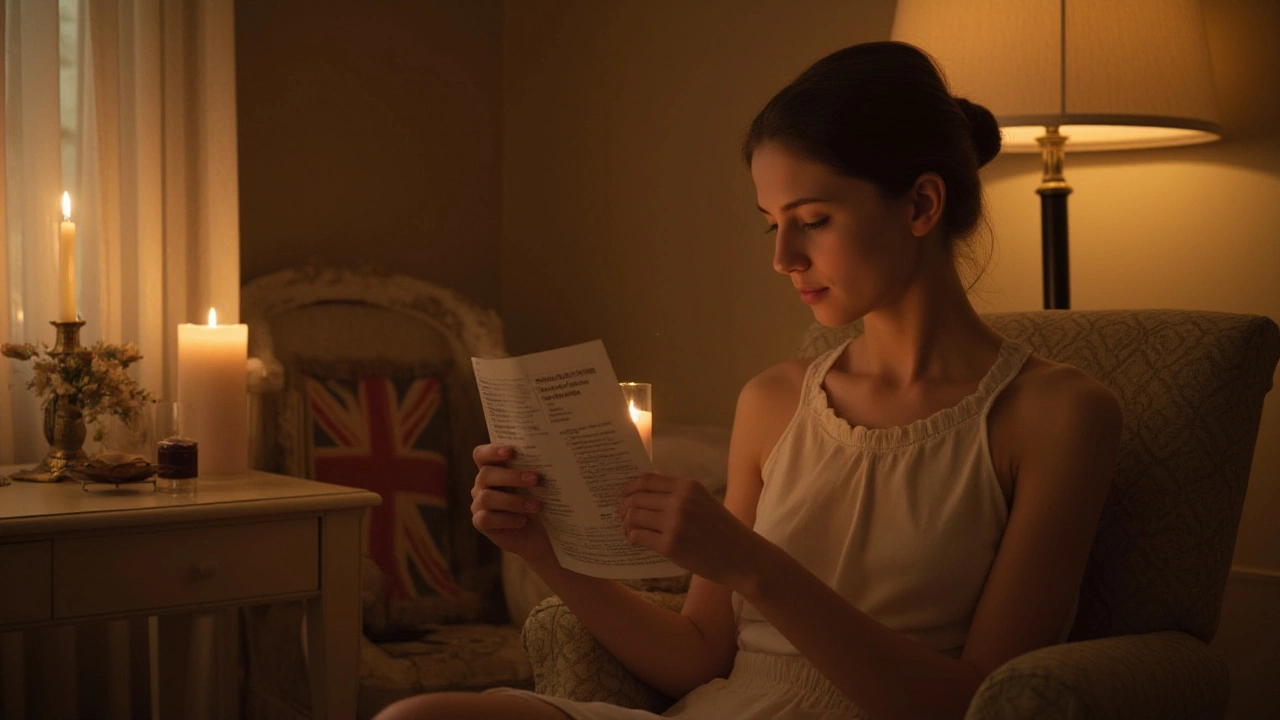
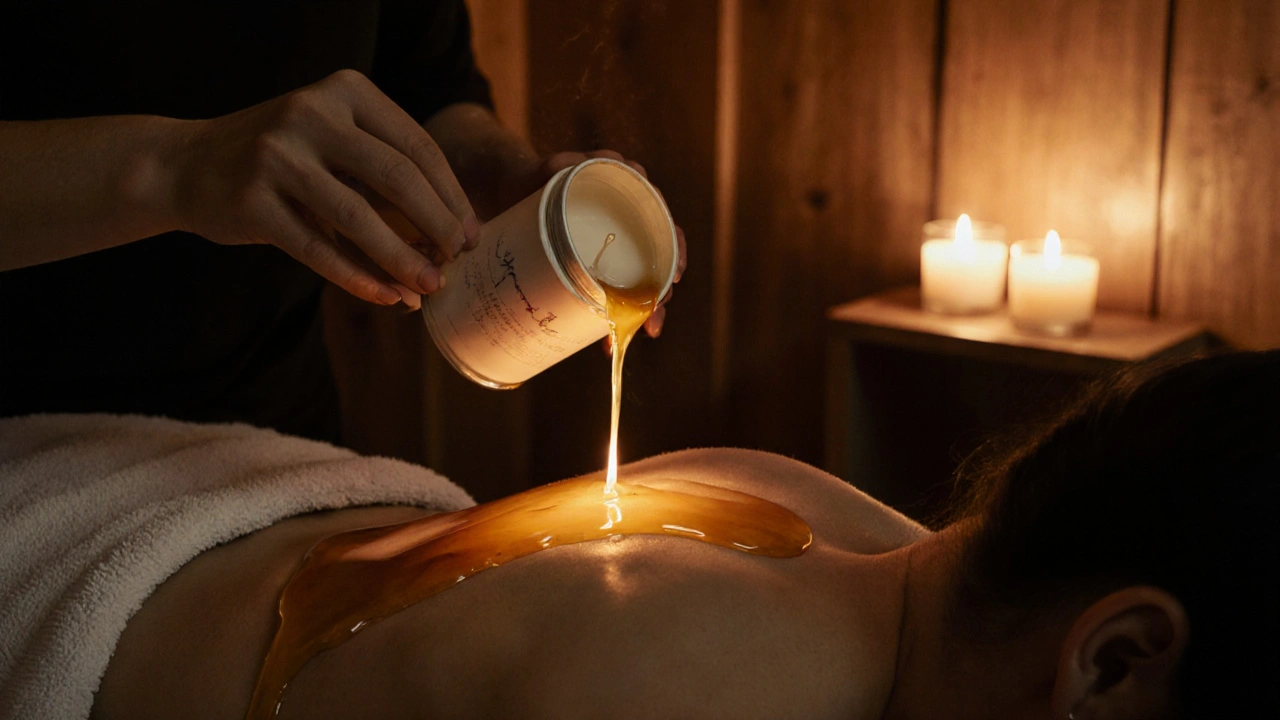
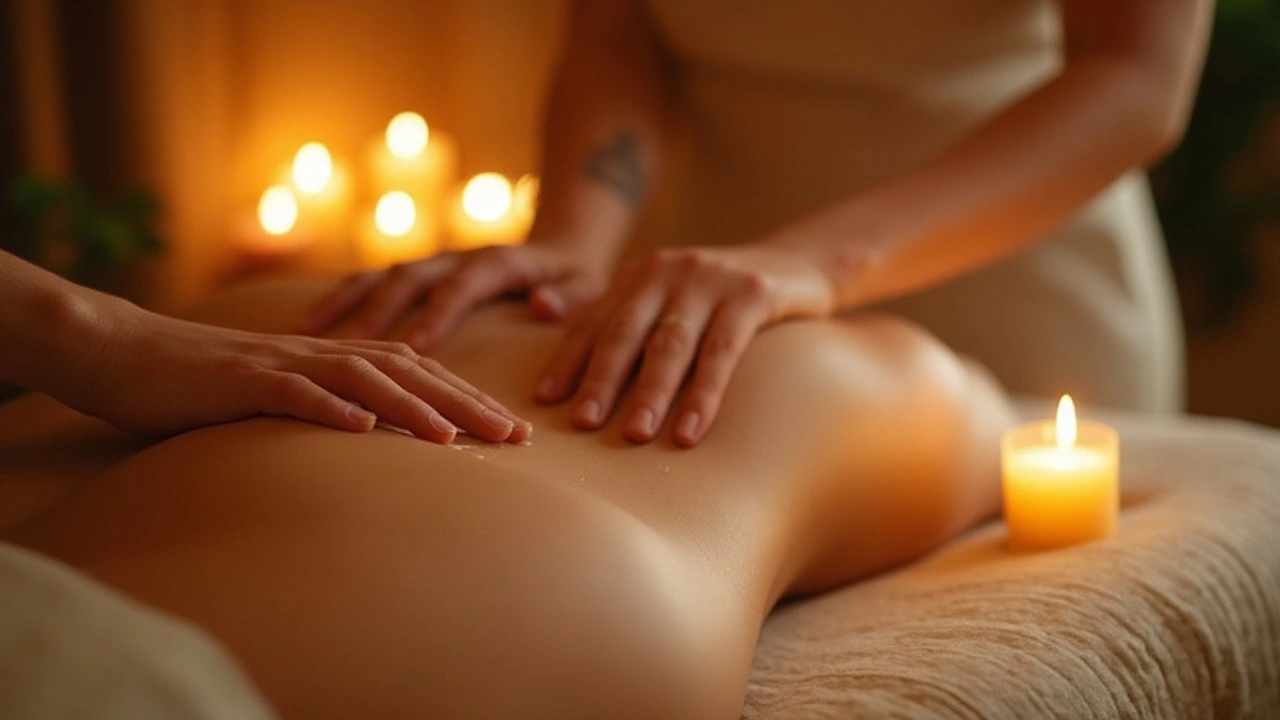



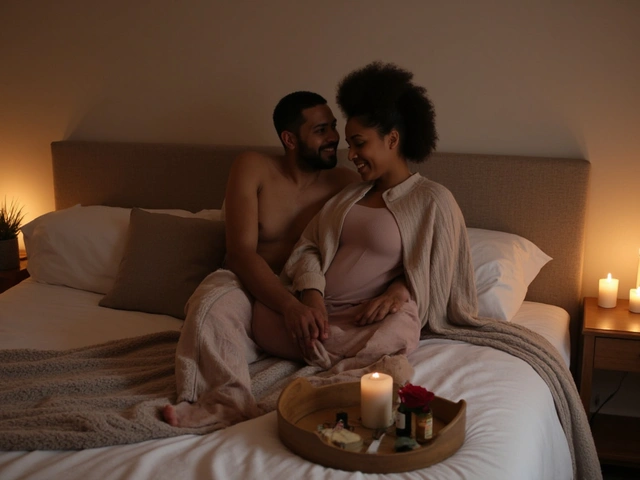

Celeste Salva
July 31, 2025 AT 16:43Honestly, I'm always a bit skeptical about candle massages. People just throw around the idea like it's some miracle relaxation trick, but honestly, you gotta be careful. The article mentions safety, but I feel like it’s not drilled enough. Anyone who's tried melting hot wax on their skin knows it's not a joke – burns happen way too easily, even if you’re careful.
Plus, some people have allergies to certain candle scents or wax components, and that can totally ruin the experience. It's not just about ambiance and relaxation; you have to think about what chemicals you're exposing your skin to. So, yeah, candle massage can be cool, but don’t just jump in without a bit of homework. Safety first, always.
Louise Tuazon
July 31, 2025 AT 18:06I totally get where you're coming from, but I think candle massage can be such a wonderful experience if done right!
One of the biggest things to remember is to always test the temperature first before applying any melted candle wax on your skin. Even I was nervous the first time, but once you get the hang of it, it’s magical!
It’s also essential to choose candles specifically made with skin-safe ingredients, like soy or beeswax. Keeps it gentle and nourishing for the skin.
And honestly, who doesn’t deserve some gentle pampering and relaxation? Just take your time and enjoy the process.
Charles Rios
July 31, 2025 AT 18:56Any thoughts on what the best type of candle wax is for beginners? I've heard soy wax is recommended a lot, but is that really better than say beeswax or paraffin for massages? Or is it more about the scent?
Also, wondering about the scents—do stronger fragrances interfere with relaxation or could they possibly trigger headaches? I've read somewhere that synthetic fragrances might be a no-go but couldn’t find much solid info.
Would be great to know if someone’s tested various candles thoroughly for this. Also curious about the melting temps - like, what’s the safe range to avoid burns?
Ellie Holder
July 31, 2025 AT 22:00Okay, let's just get real—if you’re thinking about indulging in candle massage, don’t fool yourself into thinking it’s the answer to all your tension woes. It’s a basic level concept that has been overhyped like crazy, especially in wellness circles that cling to the 'candle equals instant calm' narrative without addressing the actual risks.
First off, the quality of the candle matters way more than people want to admit. Cheap candles often contain paraffin with toxic compounds, which can be absorbed into your skin during a massage. You could be unknowingly exposing yourself to carcinogens while thinking you’re having a blissful experience.
And don’t even get me started on the mandatory safety steps some ‘experts’ skip. Without proper temperature control or even checking skin sensitivity beforehand, you’re signing up for potential burns and allergic reactions. So yeah, approach with caution and don’t assume just because it’s in trend, it’s safe or effective.
randy sng
July 31, 2025 AT 23:13Everyone here talking about burns - yeah yeah, fire and wax can hurt, duh! But how about the actual massage technique? 🙄 It drives me nuts seeing so many people just pouring candle wax like it’s a kids’ game without knowing squat about pressure points or sensitivity of different areas. Do your homework, people. A massage isn’t just slapping on heat and calling it a day.
You should be mindful where on the body you use the candle oil from the melted wax. Not everything can handle the heat or weight. To that, also add the importance of hygiene and proper cleansing because you're putting semi-liquid candle on skin in sticky form - this isn't just about slapping some spa ambiance on. It’s about skill and care.
So please, do the science before you play with hot wax. And invest in good candles designed for massages, or don’t bother.
😤David Washington
August 1, 2025 AT 00:13This topic fascinates me because it blends sensory experience with cultural traditions around touch and wellness. The history behind heated oil or candle-based massages varies in different societies, and it’s intriguing to see modern wellness culture repackaging it.
Before trying it, I’d recommend understanding the properties of the oils used and how heat influences absorption and skin reactions. Also, the psychology of scent is powerful—some fragrance compounds can elevate mood, while others might cause irritation or stress.
Does anyone know if there are any scientific studies on the benefits of candle wax massage compared to traditional oil massage? I'm curious if the candle wax itself contributes uniquely or if it's purely a marketing twist.
Mary Aslanyan
August 1, 2025 AT 08:33Having done quite a bit of DIY candle massages myself, I can share a few very practical tips that saved me from disaster more than once. First off, always dilute the wax as it melts with a carrier oil if you can. That keeps the temperature down and makes application smoother.
Also, never use just any candle you find lying around. It's crucial to use candles made from natural ingredients and explicitly labeled for skin use—many candles contain fragrances and additives that break down into nasty stuff when heated.
And take your time with temperature checks before anything touches your skin. I learned the hard way, switching between warm and too hot. Lastly, try to keep the session gentle and avoid any damaged skin or sensitive areas. It should feel relaxing, never painful.
Abraham Delgado
August 1, 2025 AT 12:43You all are missing the bigger picture here. What if there’s something sinister about candle massages hype? You ever think that this whole trend is just another way for big wellness companies to make money pushing exotic, expensive candles?
Don’t be naive; they pump out all kinds of fancy scents and claims but very little regulation on safety standards. The fact that no one questions this screams alarm bells to me. Why not just chill with normal massage oils and a good therapist instead of spending on lit candles that can literally set your house on fire?
I’m just saying, be wary of trends and marketing, not every popular thing is good or safe.
Alison Bennett
August 1, 2025 AT 14:06🌿 I’m all about natural vibes, but seriously guys, don’t trust every candle on the market! Have you checked for toxins? The article said easy tips but didn't mention checking for parabens, phthalates, or synthetic fragrances that can mess you up even if the candle feels comfy.
Also, always keep a close eye during the massage (safety first! 🔥🕯️). The wax might seem gentle but, yikes! Second-degree burns are no joke.
And don’t forget allergy tests! Some people react badly to essential oils used in candles, so if you’re trying it for the first time, test a tiny drop on your wrist hours before jumping in.
Stay safe and relaxed, friends! 😊
Stan Alley
August 2, 2025 AT 04:00Well, as someone who’s pretty serious about health and safety, I think this kind of massage, while seemingly relaxing, must be approached with real caution and respect. People underestimate the risks involved - it’s not just about spoiling yourself but about knowing your limits and physical signs. If anything feels off or too hot, stop immediately.
Also, candle burn risks can’t be overstated. Keep fire extinguishing measures nearby and ensure the environment is safe before starting this kind of treatment. Many casual users don’t do this and it’s dangerous.
That said, if done properly, I have no doubt it can be a beneficial experience. Just don’t ignore potential red flags because of cool videos on social media.